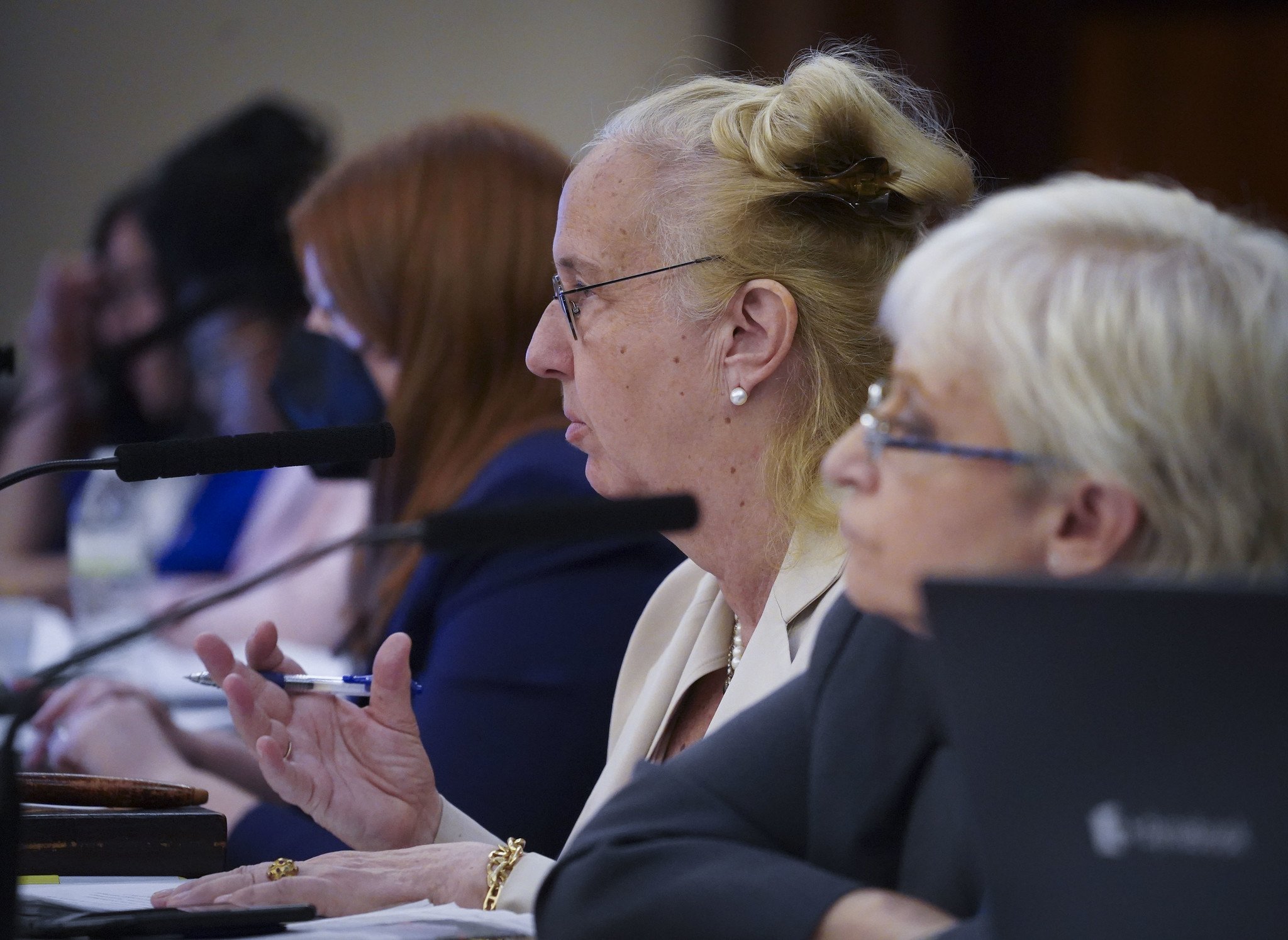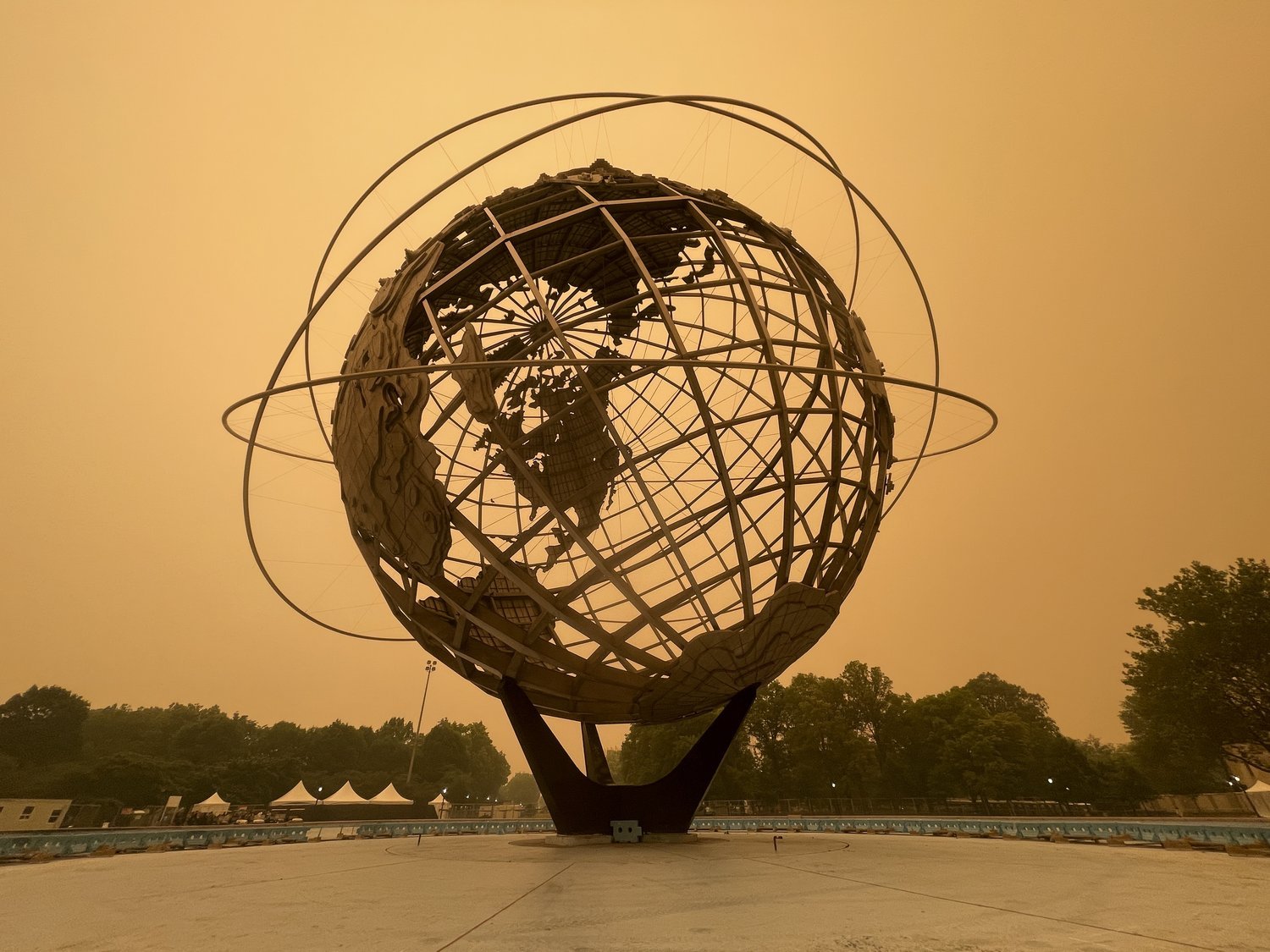Council grills Adams administration on air quality response
/Members of the Adams administration, including Office of Emergency Management Commissioner Zach Iscol, answered councilmember’s questions Wednesday about the city’s response to June’s air quality emergency. Gerardo Romo / NYC Council Media Unit
By Ryan Schwach
On June 7, New Yorkers saw the city in a different light – literally.
Smoke from Canadian wildfires fell over the city, which gave the majority of the five boroughs, including Queens, a hazy, orange tint, and brought the worst air quality the city has seen since the metric began being recorded.
To members of the New York City Council, just as confounding as the color of the skies was the Adams administration’s response to the emergency.
And so, on Wednesday, city councilmembers grilled agency heads on the city’s response to the unprecedented event.
Over a more-than-two-hour hearing, councilmembers and Public Advocate Jumaane Williams questioned commissioners from the Office of Emergency Management, Department of Health and Mental Hygiene and Department of Environmental Protection on their response, which some officials argued was delayed, unclear and unnecessarily put New Yorkers at risk.
“New Yorkers were shocked to see the sky flooded out and find the air was dangerous to breathe – they looked to state and local leaders for guidance during this unprecedented incident,” said oversight committee chair, Gale Brewer. “However, to many people it appeared that our local executives and agency chiefs had little advice to offer and how to stay safe.”
“We seemed behind the curve, at least to some people,” she added.
Though Brewer noted that the smoke event was an “unprecedented challenge,” she also said that she believed the administration did not recognize and respond to the event as early as they could have.
Public Advocate Jumaane Williams, who issued a report on the administration’s response this week, called the response a failure at all levels of government, and at one point got into a tense debate with OEM head Zach Iscol.
“I don't think there's any way we could have been prepared for a sky on fire and the level of how poorly the air was at that moment in time,” the public advocate said. “What I have focused on is preparation, information and communication, and it does seem that we were not prepared to communicate as effectively and accurately as we could have.”
Iscol, who was appointed to his position in February 2022 after a failed run for city comptroller, defended the city’s actions and said they did the best they could have done with the information available.
Iscol said that the city began sending out notifications of poor air quality starting on June 1, when the readings rose above generally healthy levels, but that forecasts for June 7, the worst day, were well below the reality of what was experienced.
“We didn't have a forecast telling us that we were going to hit hazardous levels,” Iscol said. “As soon as we did, the day that the mayor held the first press conference [June 7] was the day that we had the first indicator of hazardous levels of air quality, and so I think that's why, we have to trust the science.”
“Based on the forecasting abilities, we did everything that we should have done in terms of the guidance,” he added.
Iscol said that on June 6, the forecasts for the following day had the air quality levels around 138, which is unsafe for sensitive groups but not the general public. In reality, the June 7 air quality went up to 484.
However, Williams believed that more should have been done to notify New Yorkers, particularly those with pre-existing risks.
Councilmembers Gale Brewer and Lynn Schulman questioned city agency heads on the response and health effects related to this summer’s poor air quality. Gerardo Romo / NYC Council Media Unit
“We have to prime the public so they can understand the information that's coming to them,” said Williams. “If we got information on [June 2], that air quality might be bad, I don't think we did a good job of explaining to the public what that might mean to them.”
“Even if we didn't know how high it was going to go, there should have been some priming so that people can know what might possibly happen,” he added.
Williams also took issue with the city, and Mayor Eric Adams’ insistence that nothing different could have been done.
“There's never an admission of the simplest things that we could have done and it makes our conversations tenser unnecessary,” he said. “This is not criticism of the mayor’s administration for criticism's sake, as [Adams] said. This is literally my job.”
Iscol did acknowledge that “with 20/20 hindsight, of course we should have done more,” but still defended the city’s actions given the unprecedented nature of the event.
“I couldn't agree with you more in terms of priming New Yorkers, I agree with you 100 percent on that,” he said. “[But] this was something that had never happened before in New York City.”
Beyond when communication was made to the public, councilmembers also questioned the administration on how the communication was made.
The city’s main tool in communicating emergencies to New Yorkers is via Notify NYC, a program only about one million New Yorkers subscribe to.
Brewer is one of its subscribers, but said that she rarely pays attention to the notifications she receives from the program.
“We tend to discard it because we do get a lot of missing persons and other pieces of information, and I have to say I don't pay as much attention to it as I should,” she said. “I just want to let you know that I assume that's true of other people.”
But Iscol defended the notification service.
“I will say we should not be knocking Notify NYC either,” said Iscol. “It is not the only message channel. It is our primary one, and I encourage all New Yorkers to sign up for it.”
Councilmembers also questioned the city agencies on the adverse health effects of the air quality, and what is being done to protect New Yorkers going forward.
“It's indisputable that very poor air quality from wildfire smoke can contribute to adverse health effects, even for those who are considered reasonably healthy,” said Councilmember Lynn Sculman, Queens representative and chair of the health committee. “Air quality emergencies appear to be a new norm for New York City, and we must be prepared.”
On June 7, skies all over Queens and the five boroughs were an orange tint due to the wildfire smoke from Canada. Photo by Scott Edward Carver
Schulman’s Queens delegation colleague, Jim Gennaro, also spoke about the need for the city to flesh out more of a plan to deal with poor air quality going forward.
“The Canadian wildfires have made it painfully clear that the city needs a robust response plan for events such as these,” he said, specifically asking how PLANYC, the city’s new sustainability plan, can address air quality issues.
“Whether that's electrifying our city owned car fleets, reducing emissions from commercial cookware, or the $136 million commitment from this administration to planting more trees, which include air quality, we've taken a multifaceted approach to ways in which we'd like to both protect and improve New York City's air quality,” said Department of Environmental Protection Deputy Commissioner Beth DeFalco.






